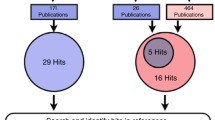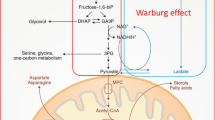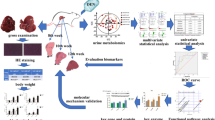Abstract
Hepatocellular carcinoma (HCC) is a very aggressive neoplasia requiring early and accurate diagnosis to improve patient outcomes with timely treatment. The liver is also very frequently colonized by metastases, and the most frequent differential diagnosis is HCC against intrahepatic cholangiocarcinoma or metastatic adenocarcinoma. Metabolomics is a powerful tool for identification of altered biomarkers in cancer, and to evaluate the efficacy of drug treatments. Here we analyzed by HILIC-MS/MS methylated arginines, basic amino acids (Arg, Cit, Orn), and their ratios in the extracts of primary HCC tissues, liver metastases from colorectal carcinoma (MET), cirrhotic related hepatitis-C-virus (CIR), and non-cirrhotic normal liver (NT) adjacent tissues. We found high levels of Arg (p < 0.0001) and Arg/Orn (p < 0.01) in MET compared to other tissues. In MET, compared to NT and CIR, Arg concentration was fivefold higher, while in HCC it was twofold higher. ADMA increased twofold compared to NT and CIR, while in HCC it was 50 % higher. Arg/Cit and ADMA/SDMA ratios were significantly higher in MET compared to NT and CIR (p < 0.005). Arg/Orn, Arg/Cit, and ADMA/SDMA ratios increased progressively from NT, CIR, HCC, to MET tissues. Arg/Cit correlated significantly with Arg/Orn ratios (r = 0.77; p < 0.0001), and discriminates tumor from non-tumor samples. In addition, the discriminant lactate/glucose ratio we previously found by NMR, also correlated significantly with the Arg levels (r = 0.64; p < 0.0001), and discriminated MET from all other tissues. The results indicated that Arg in MET is higher than other tissue classes, suggesting that, together with the lactate/glucose ratio, it can be considered a further biomarker for HCC-metastases differentiation.





Similar content being viewed by others
References
Abdelmagid, S. A., Rickard, J. A., McDonald, W. J., Thomas, L. N., & Too, C. K. L. (2011). CAT-1-mediated arginine uptake and regulation of nitric oxide synthases for the survival of human breast cancer cell lines. Journal of Cellular Biochemistry, 112, 1084–1092.
Abdelmagid, S. A., & Too, C. K. L. (2008). Prolactin and estrogen up-regulate carboxypeptidase-d to promote nitric oxide production and survival of MCF-7 breast cancer cells. Endocrinology, 149, 4821–4828.
Atalay, G., Biganzoli, L., Renard, F., et al. (2003). Clinical outcome of breast cancer patients with liver metastases alone in the anthracycline-taxane era: A retrospective analysis of two prospective, randomised metastatic breast cancer trials. European Journal of Cancer, 39, 2439–2449.
Beger, R. D. (2013). A review of applications of metabolomics in cancer. Metabolites, 3, 552–574.
Butler, E. B., Zhao, Y., Munoz-Pinedo, C., Lu, J., & Tan, M. (2013). Stalling the engine of resistance: Targeting cancer metabolism to overcome therapeutic resistance. Cancer Research, 73, 2709–2717.
Caso, G., McNurlan, M. A., McMillan, N. D., Eremin, O., & Garlick, P. J. (2004). Tumour cell growth in culture: Dependence on arginine. Clinical Science (Lond), 107, 371–379.
Chaerkady, R., Harsha, H. C., Nalli, A., et al. (2008). A quantitative proteomic approach for identification of potential biomarkers in hepatocellular carcinoma. Journal of Proteome Research, 7, 4289–4298.
Chan, E. C., Koh, P. K., Mal, M., et al. (2009). Metabolic profiling of human colorectal cancer using high-resolution magic angle spinning nuclear magnetic resonance (HR-MAS NMR) spectroscopy and gas chromatography mass spectrometry (GC/MS). Journal of Proteome Research, 8, 352–361.
Chen, T., Xie, G., Wang, X., et al. (2011). Serum and urine metabolite profiling reveals potential biomarkers of human hepatocellular carcinoma. Molecular and Cellular Proteomics,. doi:10.1074/mcp.M110.004945.
Cheng, P. N., Lam, T. L., Lam, W. M., et al. (2007). Pegylated recombinant human arginase (rhArg-peg5,000mw) inhibits the in vitro and in vivo proliferation of human hepatocellular carcinoma through arginine depletion. Cancer Research, 67, 309–317.
Colli, A., Fraquelli, M., Casazza, G., et al. (2006). Accuracy of ultrasonography, spiral CT, magnetic resonance, and alpha-fetoprotein in diagnosing hepatocellular carcinoma: A systematic review. The American Journal of Gastroenterology, 101, 513–523.
Curado, M. P., Edwards, B., Shin, H. R., et al. (2007). Cancer incidence in five continents (Vol. IX, p. 160). Lyon: International Agency for Research on Cancer (IARC) Scientific Publications.
D’Apolito, O., Paglia, G., Tricarico, F., et al. (2008). Development and validation of a fast quantitative method for plasma dimethylarginines analysis using liquid chromatography-tandem mass spectrometry. Clinical Biochemistry, 41, 1391–1395.
Dhanasekaran, R., Limaye, A., & Cabrera, L. (2012). Hepatocellular carcinoma: current trends in worldwide epidemiology, risk factors, diagnosis, and therapeutics. Hepatic Medicine Evidence and Research, 4, 19–37.
Dillon, B. J., Prieto, V. G., Curley, S. A., et al. (2004). Incidence and distribution of argininosuccinate synthetase deficiency in human cancers: a method for identifying cancers sensitive to arginine deprivation. Cancer, 100, 826–833.
El-Serag, H. B., & Rudolph, K. L. (2007). Hepatocellular carcinoma: Epidemiology and molecular carcinogenesis. Gastroenterology, 132, 2557–2576.
Ferlay, J., Shin, H. R., Bray, F., Forman, D., Mathers, C., & Parkin, D. M. (2010). Estimates of worldwide burden of cancer in 2008: GLOBOCAN 2008. International Journal of Cancer, 127, 2893–2917.
Forner, A., Llovet, J. M., & Bruix, J. (2012). Hepatocellular carcinoma. Lancet, 379, 1245–1255.
Gardini, G., Cravanzola, C., Autelli, R., et al. (2003). Agmatine inhibits the proliferation of rat hepatoma cells by modulation of polyamine metabolism. Journal of Hepatology, 39, 793–799.
Glazer, E. S., Piccirillo, M., Albino, V., et al. (2010). Phase II study of pegylated arginine deiminase for nonresectable and metastatic hepatocellular carcinoma. Journal of Clinical Oncology, 28, 2220–2226.
Gonzalez, G. G., & Byus, C. V. (1991). Effect of dietary arginine restriction upon ornithine and polyamine metabolism during two-stage epidermal carcinogenesis in the mouse. Cancer Research, 51, 2932–2939.
Griffin, J. L., & Shockcor, J. P. (2004). Metabolic profiles of cancer cells. Nature Reviews Cancer, 4, 551–561.
Hanahan, D., & Weinberg, R. A. (2011). Hallmarks of cancer: The next generation. Cell, 144, 646–674.
Jemal, A., Bray, F., Center, M. M., Ferlay, J., Ward, E., & Forman, D. (2011). Global cancer statistics. CA: A Cancer Journal for Clinicians, 61, 69–90.
Kassahun, W. T., Fangmann, J., Harms, J., Hauss, J., & Bartels, M. (2006). Liver resection and transplantation in the management of hepatocellular carcinoma: A review. Experimental and Clinical Transplantation, 4, 549–558.
Kenific, C. M., Thorburn, A., & Debnath, J. (2010). Autophagy and metastasis: another double-edged sword. Current Opinion in Cell Biology, 22, 241–245.
Kim, Y. S., Maruvada, P., & Milner, J. A. (2008). Metabolomics in biomarker discovery: Future uses for cancer prevention. Future Oncology, 4, 93–102.
Koppenol, W. H., Bounds, P. L., & Dang, C. V. (2011). Otto Warburg’s contributions to current concepts of cancer metabolism. Nature, 11, 325–337.
Lam, T. L., Wonga, G. K. Y., Chong, H. C., et al. (2009). Recombinant human arginase inhibits proliferation of human hepatocellular carcinoma by inducing cell cycle arrest. Cancer Letters, 277, 91–100.
Li, H., Zhou, Y., Zhao, A., et al. (2013). Asymmetric dimethylarginine attenuates serum starvation-induced apoptosis via suppression of the Fas (APO-1/CD95)/JNK (SAPK) pathway. Cell Death and Disease, 4, e830. doi:10.1038/cddis.2013.345.
Lind, D. S. (2004). Arginine and cancer. The Journal of Nutrition, 134, 2837S–2841S.
Liu, S. Y., Zhang, R. L., Kang, H., Fan, Z. J., & Du, Z. (2013). Human liver tissue metabolic profiling research on hepatitis B virus-related hepatocellular carcinoma. World Journal of Gastroenterology, 19, 3423–3432.
Moinard, C., Cynober, L., & de Bandt, J. P. (2005). Polyamines: Metabolism and implications in human diseases. Clinical Nutrition, 24, 184–197.
Morris, S. M, Jr. (2002). Regulation of the enzymes of the urea cycle and arginine metabolism. Annual Review of Nutrition, 22, 87–105.
O’Connell, T. M. (2012). Recent advances in metabolomics in oncology. Bioanalysis, 4, 431–451.
Paris, D., Melck, D., Stocchero, M., et al. (2010). Monitoring liver alterations during hepatic tumorigenesis by NMR profiling and pattern recognition. Metabolomics, 6, 405–416.
Pavlides, S., Tsirigos, A., Migneco, G., et al. (2010). The autophagic tumor stroma model of cancer. Role of oxidative stress and ketone production in fueling tumor cell metabolism. Cell Cycle, 9, 3485–3505.
Satriano, J., Matsufuji, S., Murakami, Y., et al. (1998). Agmatine suppresses proliferation by frameshift induction of antizyme and attenuation of cellular polyamine levels. Journal of Biological Chemistry, 273, 15313–15316.
Slebos, R. J., Jehmlich, N., Brown, B., et al. (2013). Proteomic analysis of oropharyngeal carcinomas reveals novel HPV-associated biological pathways. International Journal of Cancer, 132, 568–579.
Syed, N., Langer, J., Janczar, K., et al. (2013). Epigenetic status of argininosuccinate synthetase and argininosuccinate lyase modulates autophagy and cell death in glioblastoma. Cell Death and Disease, 4, e458. doi:10.1038/cddis.2012.197.
Szlosarek, P. W., Klabatsa, A., Pallaska, A., et al. (2006). In vivo loss of expression of argininosuccinate synthetase in malignant pleural mesothelioma is a biomarker for susceptibility to arginine depletion. Clinical Cancer Research, 12, 7126–7131.
Szuba, A., Chachaj, A., Wrobel, T., et al. (2008). Asymmetric dimethylarginine in hematological malignancies: a preliminary study. Leukemia & Lymphoma, 49, 2316–2320.
Teerlink, T. (2007). HPLC analysis of ADMA and other methylated l-arginine analogs in biological fluids. Journal of Chromatography B, 851, 21–29.
Vander Heiden, M. G. (2011). Targeting cancer metabolism: a therapeutic window opens. Nature Reviews Drug Discovery, 10, 671–684.
Vermeersch, K. A., & Styczynski, M. P. (2013). Applications of metabolomics in cancer research. Journal of Carcinogenesis, 12, 9. doi:10.4103/1477-3163.113622.
World Health Organization. (2008). Mortality Database, WHO Statistical Information System. Retrieved from http://www.who.int/whosis/en/index1.html.
Wu, L., Li, L., Meng, S., Qi, R., Mao, Z., & Lin, M. (2013). Expression of argininosuccinate synthetase in patients with hepatocellular carcinoma. Journal of Gastroenterology and Hepatology, 28, 365–368.
Yang, Y., Li, C., Nie, X., et al. (2007). Metabonomic studies of human hepatocellular carcinoma using high-resolution magic-angle spinning 1H NMR spectroscopy in conjunction with multivariate data analysis. Journal of Proteome Research, 6, 2605–2614.
Yorimitsu, T., & Klionsky, D. J. (2005). Autophagy: Molecular machinery for self-eating. Cell Death and Differentiation, 12, 1542–1552.
Yoshimatsu, M., Toyokawa, G., Hayami, S., et al. (2011). Dysregulationof PRMT1 and PRMT6, Type I arginine methyltransferases, is involved in various types of human cancers. International Journal of Cancer, 128, 562–573.
Zhao, Y., Butler, E. B., & Tan, M. (2013). Targeting cellular metabolism to improve cancer therapeutics. Cell Death and Disease, 4, e532. doi:10.1038/cddis.2013.60.
Acknowledgments
We are grateful to patients for their important contribution to this study. Financial support was received from the University of Foggia (Premialità PRIN 2008).
Author information
Authors and Affiliations
Corresponding author
Additional information
Oceania D’Apolito, Daniela Garofalo and Monica Gelzo contributed equally to this work.
Electronic supplementary material
Below is the link to the electronic supplementary material.
Rights and permissions
About this article
Cite this article
D’Apolito, O., Garofalo, D., Gelzo, M. et al. Basic amino acids and dimethylarginines targeted metabolomics discriminates primary hepatocarcinoma from hepatic colorectal metastases. Metabolomics 10, 1026–1035 (2014). https://doi.org/10.1007/s11306-014-0641-2
Received:
Accepted:
Published:
Issue Date:
DOI: https://doi.org/10.1007/s11306-014-0641-2




